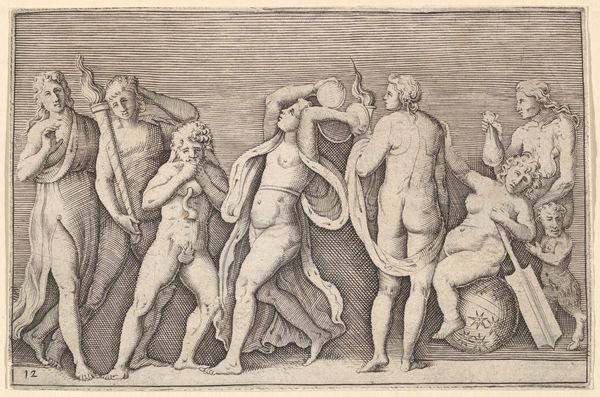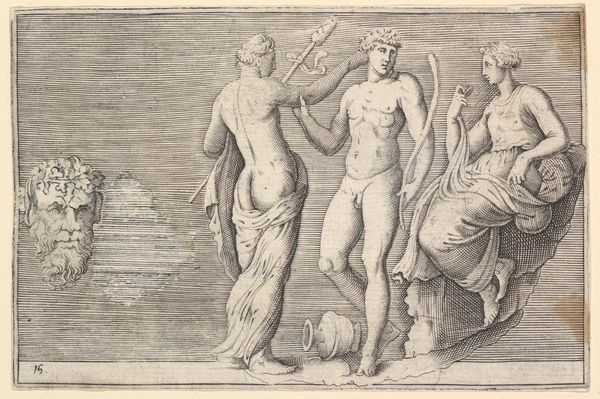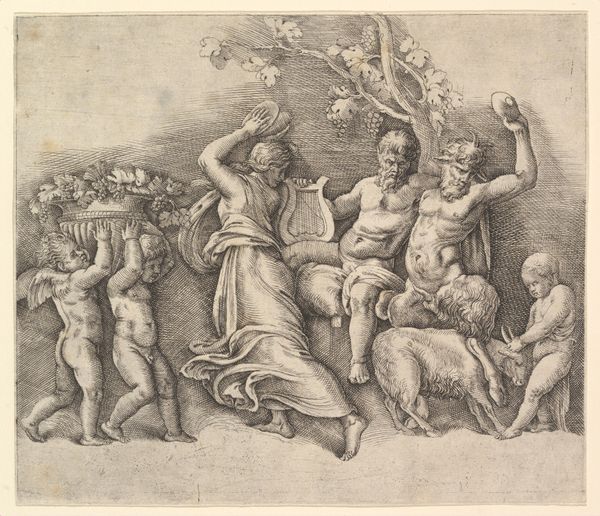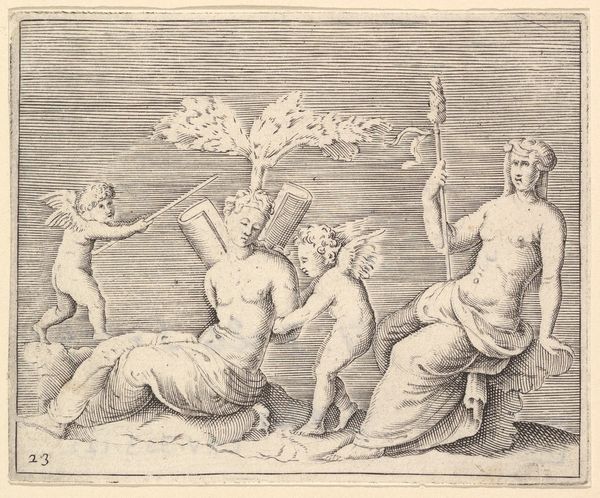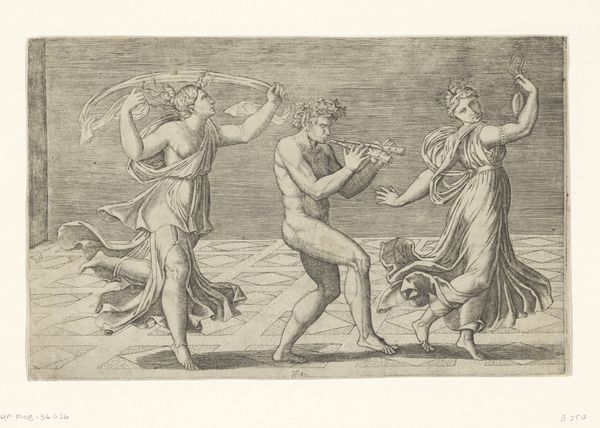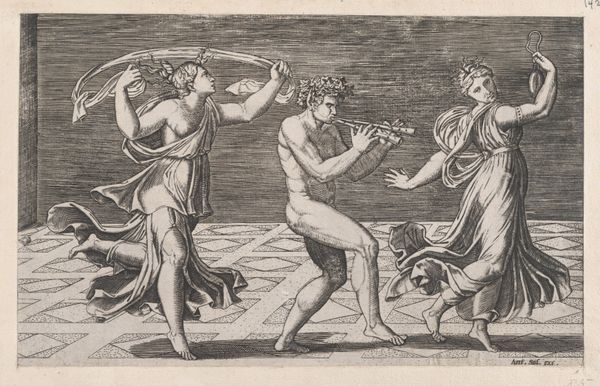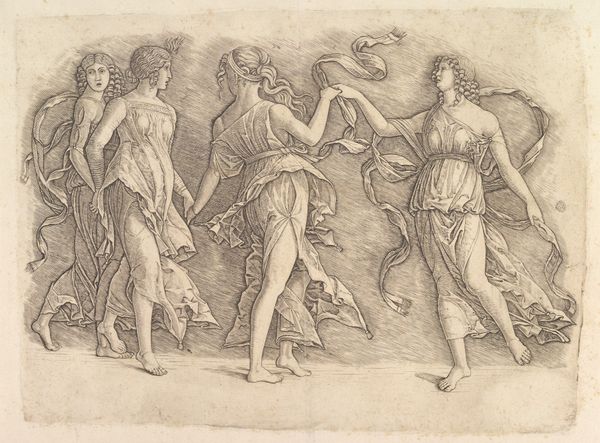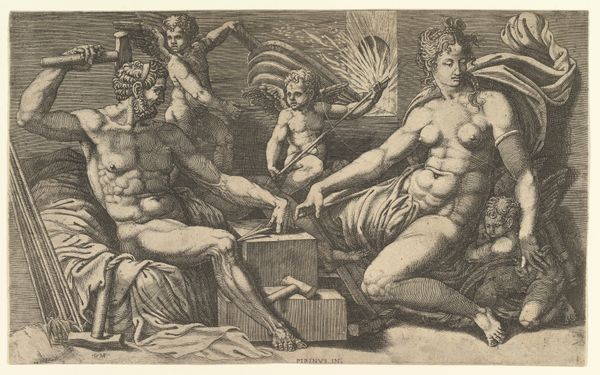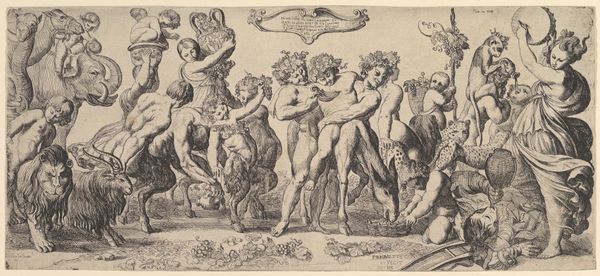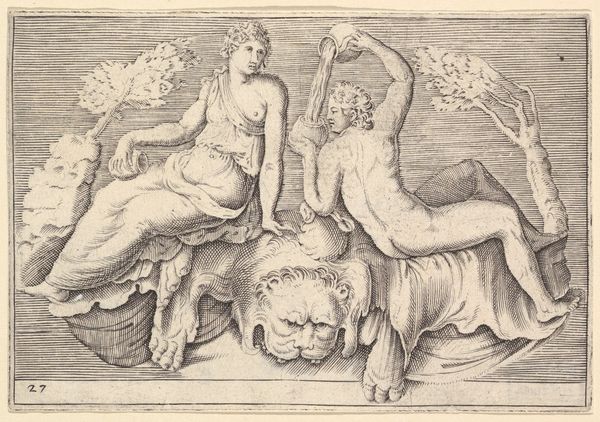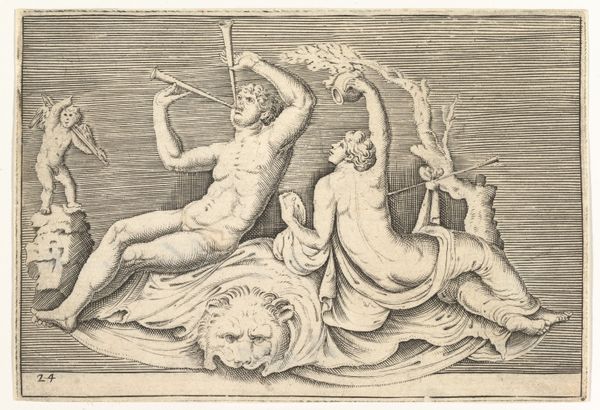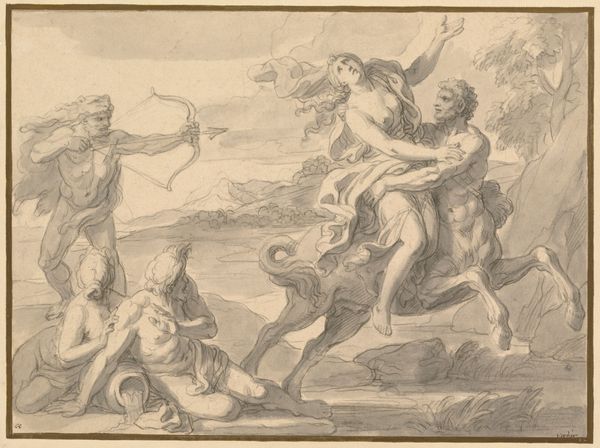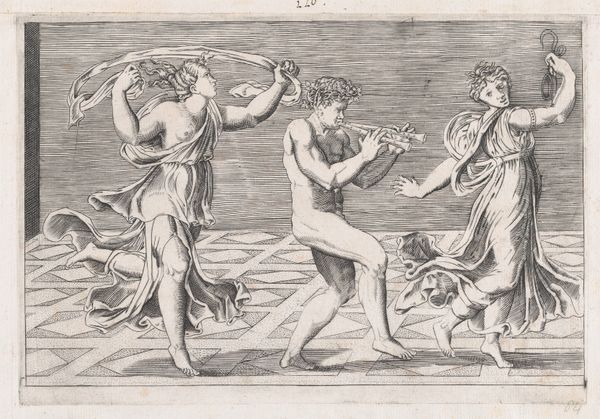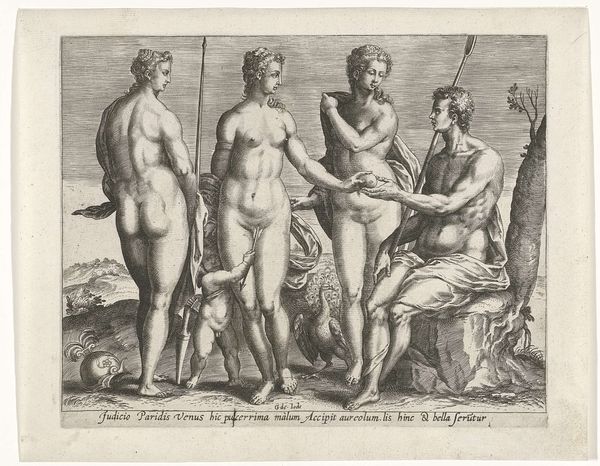
Two Figures, a Faun, and a Satyr approach a Recliniing Woman, from "Ex Antiquis Cameorum et Gemmae Delineata/ Liber Secundus/et ab Enea Vico Parmen Incis" 1599 - 1622
0:00
0:00
drawing, print, engraving
#
drawing
#
allegory
# print
#
mannerism
#
11_renaissance
#
female-nude
#
men
#
portrait drawing
#
history-painting
#
nude
#
engraving
#
male-nude
Dimensions: plate: 3 7/16 x 4 7/8 in. (8.8 x 12.4 cm)
Copyright: Public Domain
Editor: This engraving, “Two Figures, a Faun, and a Satyr approach a Reclining Woman," is by an anonymous artist from between 1599 and 1622. The scene feels theatrical, almost like a snapshot from a Mannerist play. How would you interpret the significance of this dramatic grouping in its historical context? Curator: It's crucial to remember that prints like these circulated widely during the late Renaissance. Consider their public role: they popularized classical themes and styles. What message might the depiction of satyrs and reclining women convey to its audience at the time? Is it merely decorative, or could it serve a didactic purpose within a specific cultural framework? Editor: Didactic, like teaching a moral? So, could this image be presenting a moral lesson, or perhaps reinforcing societal expectations around sensuality and the classical world? Curator: Precisely! Think about how Mannerism played with ideal forms and artificiality. It served specific cultural needs and catered to educated viewers familiar with mythological narratives. Did this circulation contribute to the elite culture of the time? Did such displays of "classicism" reflect a certain power dynamic? Editor: That makes me wonder about the accessibility of art and knowledge in that era. Was this art for the masses or mainly for a privileged, educated class who understood those visual cues? Curator: The printing press facilitated wider access than paintings or sculptures. Nonetheless, deciphering classical allusions necessitated specific intellectual backgrounds, thus it did stratify society and reflect the complex politics surrounding access to knowledge during that period. Consider the role of patronage and the function this print served within networks of power and influence. Editor: This helps clarify my perception so much more. Initially, I saw a simple depiction, but the web of societal context unveils how artistic production functions as an active participant within socio-political circumstances. Curator: Precisely! By analyzing how artworks interact with the cultural and institutional settings of their time, we reveal their layered meaning.
Comments
No comments
Be the first to comment and join the conversation on the ultimate creative platform.
